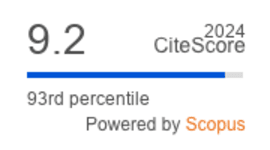Comparative Study of Antibacterial Activity of Cistus ladanifer L. Leaves Extracted by Ultrasound-Assisted Extraction and Maceration
DOI:
https://doi.org/10.36877/pmmb.a0000394Abstract
Addressing infectious diseases poses a significant healthcare challenge due to the growing resistance of microorganisms to antibiotics. Consequently, extensive research efforts have been dedicated to identifying alternative molecules to antibiotics that can combat these infectious diseases. Notably, a wealth of bioactive compounds has been discovered in medicinal and aromatic plants, and their potential utility in the development of treatments for infectious diseases has been well-established. In this study, we employed two extraction methods, namely maceration and ultrasound-assisted extraction (UAE), and four different solvents with varying polarities to isolate bioactive compounds from Cistus ladanifer L. Subsequently, quantification of polyphenols was determined in all the extracted samples. Following this, we conducted both qualitative and quantitative assessments of the antibacterial activity of these extracts. Moreover, we delved into the mechanism of action of the most potent extract using scanning electron microscopy. The results revealed that methanol was the best solvent for extracting bioactive molecules and that UAE had a high extraction efficiency since it gave a higher yield of total polyphenols than the one acquired by maceration. Regarding the results of the disk diffusion assay, the extracts that were prepared by UAE were more effective against our bacterial strains than those extracted by maceration. Electron micrographs of damaged cells revealed that the methanolic extract obtained by UAE affected the integrity of the cell membrane. These outcomes have underscored the presence of active compounds within Cistus ladanifer L. that could serve as potential alternatives to antibiotics against some of the most pathogenic bacterial species.
Downloads
Published
How to Cite
Issue
Section
License
Copyright (c) 2023 Houda Chtibi, Kaoutar Harboul, Taofiq Benali, Abdelhakim Bouyahya, Khabbach Abdelamjid, Said Louahlia, Jactty Chew, Long Chiau Ming, Khalil Hammani

This work is licensed under a Creative Commons Attribution-NonCommercial 4.0 International License.
Author(s) shall retain the copyright of their work and grant the Journal/Publisher right for the first publication with the work simultaneously licensed under:
Creative Commons Attribution-NonCommercial 4.0 International (CC BY-NC 4.0). This license allows for the copying, distribution and transmission of the work, provided the correct attribution of the original creator is stated. Adaptation and remixing are also permitted.

This broad license intends to facilitate free access to, as well as the unrestricted reuse of, original works of all types for non-commercial purposes.
The author(s) permits HH Publisher to publish this article that has not been submitted elsewhere.



.png)

.jpg)
